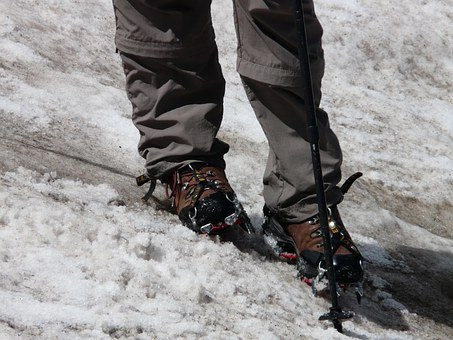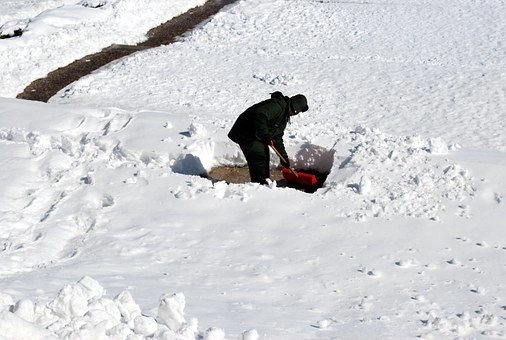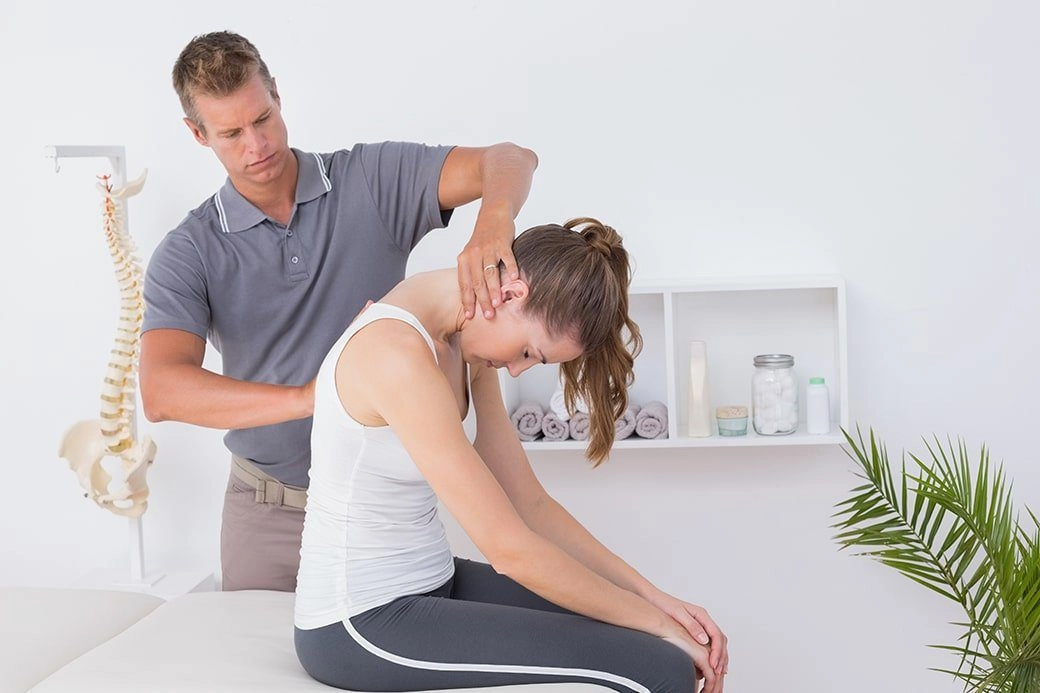Unless you live somewhere like Southern California or Florida, where the only ice you ever see are the ones floating in your glass, then chances are you will have some very close encounters with icy pavements, driveways, walkways, and sidewalks. But don’t worry, your Anchorage chiropractor is here to help.
Learning to walk on these dangerous surfaces can be quite a trick, even for the very experienced. Sometimes, all you can do is hope for the best but knowing a few little tricks about how to walk on ice can have you looking like a pro and save you a lot of injuries.
Speaking of injuries, did you know that there are approximately 42,000 accidents involving icy conditions? Also, falls accounted for nearly 32,000 deaths in 2014. The number of injuries is probably much higher when you consider how many people slip and fall but never report it or need a doctor’s attention.
While we are often very aware of very low temps, so we cover up to prevent frostbite or we avoid walking underneath snow-covered trees, all too often people ignore their footing until they find themselves falling hard on some unexpected patch of ice.
Even though those social media videos of people slipping, falling, and sliding down their street on their backsides might be funny to watch, they aren’t funny when you think about how badly many people are injured by just such accidents.
If you want to know how to walk on ice safely, keep reading. If you practice this advice, penguins won’t be able to hold a candle next to your skills!

Tip #1-Take Short Steps
One of the key points for walking on ice is to keep force applied to the ground more vertically so there is less backward and forward motion. Backward and forward motion requires friction, something you don’t have when there are icy paths.
The moment you realize that there is ice, make it a habit that you will take shorter steps. Think almost baby-like steps. While you might be frustrated at your slow progress, it beats getting there more quickly by sliding on your butt!
Tip #2-Avoid Stairs and Slopes
As if a flat, icy covered surface wasn’t dangerous enough, once you add stairs or a slanted driveway, you are going to need all the skills you can muster. Because let’s face it, gravity is going to do its thing. This means that if the sidewalk is headed downhill, gravity is going to be pushing you in that direction as well.
If at all possible, avoid stairs and sloping surfaces. If you can’t avoid them, follow tip #1 and remember to go slowly. Use handrails if they are available and in the case of stairs, place your feet straight up and down. Do not attempt to push yourself up to the next step, otherwise it will be ice-1 human-0.
Tip #3-Check Your Feet
What are the best shoes for walking on ice? There is a huge variety of shoes that are supposed to have better traction for walking on ice, and those can help in some circumstances, but studies have found that the Stabil Spikes, which attach to your shoes, offer far better traction on icy surfaces.
Otherwise, avoid leather soles and opt for rubber shoes, especially those that might have cleats, spikes, or some other type of improved traction soles. You can also buy some of the “traction in a can” sprays which coat the soles of your shoes with a rubbery type of resin to improve the grip of your shoes.
Tip #4-Waddle It Out
How do you stop slipping on ice? Take a tip from our little tuxedo wearing friends up north (penguins, we mean) and imitate their walk! Walking like a penguin, shuffling along with your feet planted in place may make you look funny, but wouldn’t you rather waddle like a penguin than wear bruises for the holidays?!
Keep your center of gravity over your front leg to avoid slipping. Lean forward just a bit so that the opposite shoulder is in line with your front leg. Practice a bit in front of a mirror so you can see how to do this.
If you end up walking in snow, try to walk in someone eses footsteps. The previous person’s tread mark will give you at least a little extra gripping power, as well as taking up a little less energy on your part.
Tip #5-Dig Out Your Compass
If you have a choice, walk on the south side of a building or on the southern portion of a walkway. During the winter months, the sun faces south, which means that north facing sides of buildings get little or no sun. The same with icy sidewalks. The north facing portion will hold on to ice much longer than the south facing portion.
Don’t forget to take your hands out of your pockets when walking. Wear gloves and use your hands for handrails or to help you maintain your balance.
Tip #6-Be Aware. Be Very Aware.

Believe it or not, many of the slip and fall accidents involving ice are from people who are either at home in familiar surroundings or they simply weren’t paying attention. AT home, we know our yards and sidewalks so well that we often fail to pay attention to what appears to be a clear spot on the sidewalk only to discover that it’s black ice. How to walk on black ice? If you aren’t paying attention, you usually do so on your tush.
Wear sunglasses on bright days to help minimize the glare that can stop you from seeing icy paths. Use handrails, even if you think you don’t really need them. Anytime you see a shiny or “wet” spot, assume its ice or, at the very least, a slippery surface.
Only carry what you must. Carrying anything upsets your sense of balance. If possible, divide the load between two bags and carry one in each hand (or on your shoulder) A backpack is a great solution, but be sure you wear it on your back and not on one shoulder.
Last, but not least, ignore your phone. While it may be tempting to dig it out of your pocket or purse, if you are paying attention to your phone, you aren’t paying attention to the possibility that ice is directly in front of you.
Tip #7- Improve Your Balance
Here’s a tip you can practice year-round, so you have a better chance of not falling- improve your balancing skills! Having a good sense of balance won’t prevent you from slipping, but it can keep you on your feet.
Balancing exercises are easy and can be done almost anywhere. The simplest one is to stand on one foot, like a flamingo. Try to stay balanced for 1 minute. Strong leg and core muscles can help to improve your balance as well. Your Anchorage chiropractor may have a number of other exercises for you, as well.
What is the Safest Route to Take?

How do you walk on an icy pavement? The safest and best way is to just not do it at all! Unfortunately, this simply isn’t possible most of the time. Can you slip on snow? You bet you can, so don’t think that a snow pile is a great shortcut! The same goes for frozen puddles or other slippery surfaces. Don’t forget too that even though they might have just plowed the street doesn’t mean that there isn’t a slick layer of ice underneath!
Advice from Your Anchorage Chiropractor: If You Do Fall
Sometimes, despite our best efforts, we are going down and we know it. You might not be able to avoid it, but you can prepare yourself. Try to fall so that you minimize your injuries. If you know you are going to fall, try to remember these tips:
- Get closer to the ground. Falling from 6 feet is going to cause a whole lot more damage than falling from 3 feet. Pull up your knees and try to fall on your side.
- It’s natural to try to use your arms to catch yourself, but it’s also easy to break your arm or wrist. Instead, cross your arms over your chest.
- Pull your head in. Tuck your chin to your chest so your head won’t strike the floor.
If this sounds a bit complicated, check out this video that demonstrates how to fall, as well as how to penguin walk.
If You Are Injured
If you do fall and you find that your back, tailbone, knees, elbows, or wrists are hurting, you should see your local chiropractor in Anchorage as soon as possible. You will need x-rays to see if anything was broken or fractured. Hopefully, your injuries are minor and with some comprehensive chiropractic care you will be back on your feet in a short period of time.

The friendly staff at Better Health Chiropractic and Rehab in Anchorage would be happy to call your insurance company to determine your coverage and copay or deductible amounts. Even if you aren’t insured, this doesn’t mean you need to live with the pain of your injuries! Read this article before you decide you can’t afford treatment if you don’t have insurance.
Winter falls can happen to anyone, regardless of age or physical condition, but by following the sensible tips above you can minimize your risk of slipping, falling, and sliding on icy pavement, as well as avoid becoming a sensation on YouTube.










